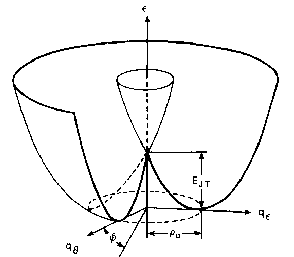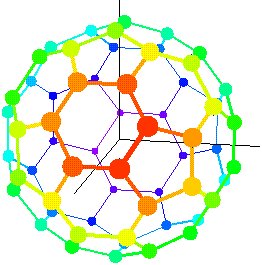Traditionally: the ground state remains for any (linear) coupling of the same symmetry. How boring!
But why?
Because of a Berry phase!
In short, a degenerate vibronic state would not match the antiperiodic
boundary conditions imposed by the change in sign of the electronic
variables to the vibrational ones. So, the ground state has to be
degenerate, and it turns out that the same degeneracy of the original
electronic state prior to coupling is OK for all couplings.



